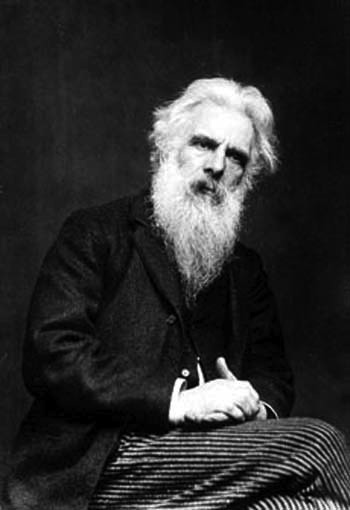 |
| Eadweard Muybridge |
Since the last post, I attended the second session of this module. During this, we were split into groups of three and given a topic to research between us. I was with Jon and Chris, who are also in my Collaborative Practice group. We were tasked with trying to construct a 100 word piece of research, summing up and elaborating on the area of 'Motion Graphics'. The following is what we ended up writing:
-------------------------------------------
Motion Graphics can be best described as:
“The practice of graphic design for film and television. Now the boundaries of this practice are expanding due to rapid changes in technology, meaning that new paradigms of production and dissemination are constantly evolving.”
Chelsea Arts LINK
The term 'Motion Graphics' is changing and incorporating a variety of skills, methods and products. It is about creating the illusion of movement. Its origins stem from the 19th century, with records of motion graphics being introduced by the British photographer Eadweard Muybridge (1830-1904), who invented viewing apparatus called a zoopraxiscope, which enabled a sequence of images to be viewed in quick succession. This created the illusion of motion. There is a noticeable transition from the physical, manual side, to the modern computer and digital side and with good reason. As traditional methods such as hand drawn frames are time consuming and costly, it is easy to see the appeal and focus on technology to allow for motion to be created in a variety of mediums. It offers flexibility and originality for both artist and the viewer.
With regards to predicting what motion graphics will go from here, in 2003, Matt Frantz et al wrote the following as the introduction to his paper titled 'Changing Over Time: The Future of Motion Graphics'
"Motion graphic design has been considered a speciality skill, usually handled by artists that concentrate on designing for television broadcast or films. Within the next 10 years, not only will the majority of graphic designers work with time-based media, but the general population will associate graphic design more with moving imagery on television screens or computer monitors. The current association of graphic design as images and text printed on paper, clothing, or billboards will remain, but the commonly held belief that graphic design refers just to static imagery will disappear completely"
Frantz, M. 2003
This prediction is seven years in, however it can be clearly seen as accurate. With the increase of animated full length films, computer games and so on, motion graphics has certainly moved into and fully embraced the digital realm, whilst continuing to grow and incorporate many other practices.
---------------------------
The point of this exercise was to demonstrate that it is important to reference correctly, using the Harvard style. It was also pointed out that all areas needing references also includes images, concepts, notions, web sites and any other forms of media. Plagiarism was a key area that was covered.
Within the next few days, I intend to add some information and research with regards to what area I am going to research. At this stage, it may be a case of complying my research from both my 3D Animation and 3D Computer Technologies modules, to create a well rounded research area (modelling and animation). From the task one hand in, I aim to understand the area I am studying and be able to identify which of the two areas I wish to pursue more.

No comments:
Post a Comment